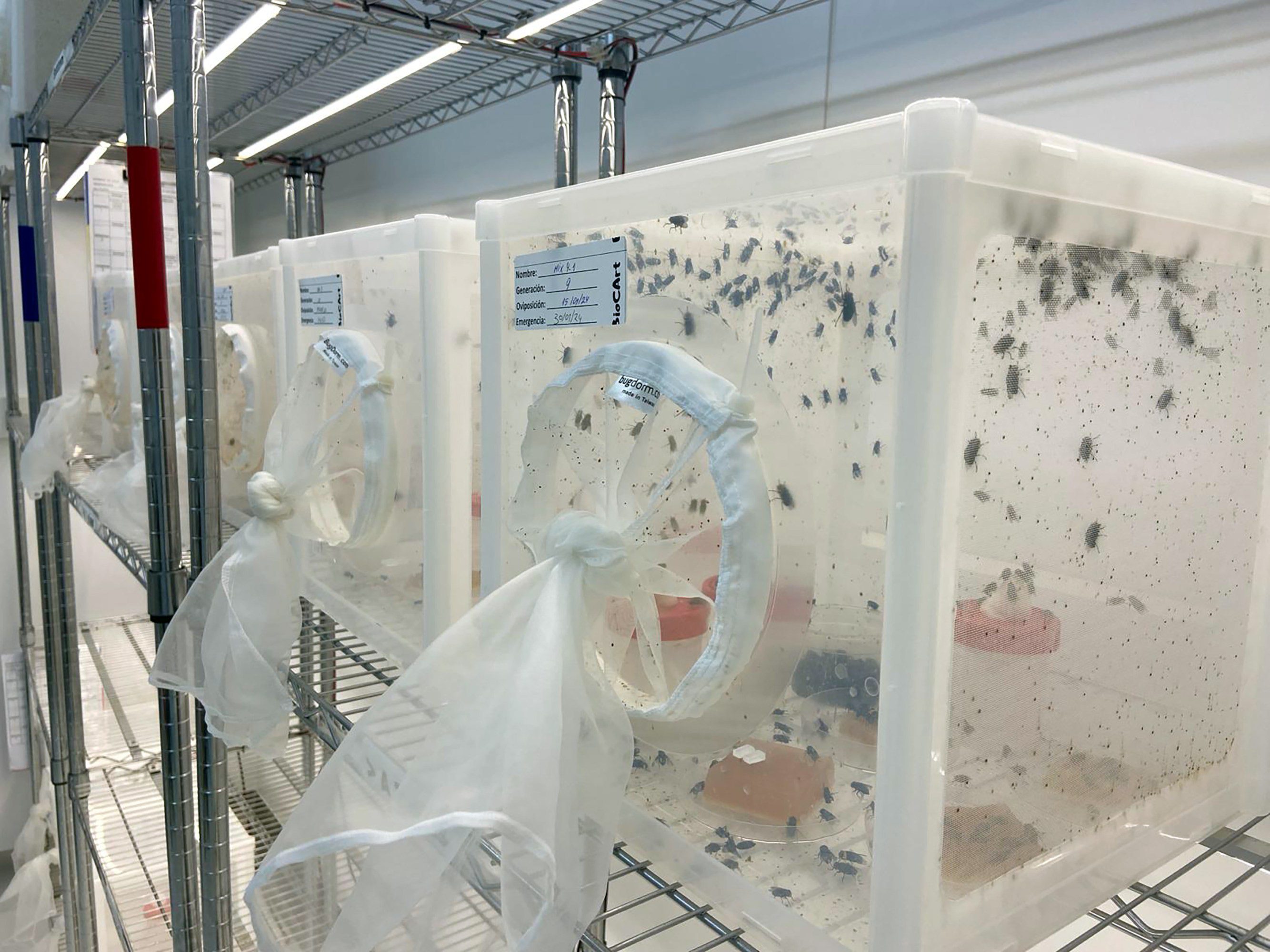How some bacteria are cleaning up our messy water supply
This article first appeared in The Checkup, MIT Technology Review’s weekly biotech newsletter. To receive it in your inbox every Thursday, and read articles like this first, sign up here.
The diabetes medication metformin has been touted as a miracle drug. Not only does it keep diabetes in check, but it can reduce inflammation, curb cancer, stave off the worst effects of covid, and perhaps even slow the aging process. No wonder it’s so popular. In the US, the number of metformin prescriptions has more than doubled in less than two decades, from 40 million in 2004 to 91 million in 2021.
Worldwide, we consume more than 100 million kilograms of metformin a year. That’s staggering.
All that metformin enters the body. But it also exits largely unchanged and ends up in our wastewater. The quantities found there are tiny—tens of micrograms per liter—and not likely to harm humans. But even small amounts can affect aquatic organisms that are literally swimming in it.
Lawrence Wackett, a biochemist at the University of Minnesota, got interested in this issue about a decade ago. Researchers had observed that at some wastewater treatment plants, the amount of metformin entering was much larger than the amount leaving. In 2022, Wackett’s team and two other groups identified the bacteria responsible for metabolizing the drug and sequenced their genomes. But Wackett still wondered which genes were responsible.
Now he knows. This week, he and his colleagues reported that they have identified two genes encoding proteins that can break down metformin. The study was published in the Proceedings of the National Academy of Sciences. These proteins are produced by at least five species of bacteria found in wastewater sludge across three continents. But here’s what struck me: This isn’t a coincidence. These bacteria evolved the ability to metabolize metformin. They saw an opportunity to capitalize on the ubiquity of the drug in their environment, and they seized it. “This happens all the time,” Wackett says. “Microbes adapt to the chemicals that we make.”
Here’s another example. In the 1960s, farmers began using a new weed killer called atrazine. For about a decade, scientists reported that the chemical appeared to degrade slowly in soil. But about a decade later, that changed. “Everybody was reporting, ‘No, it’s going away really fast—in weeks or a month.” That’s because bacteria evolved the capacity to metabolize atrazine to extract nitrogen. “There is selective pressure,” Wackett says. “The bacteria that figured out how to get that nitrogen out have a big selective advantage.”
This kind of bacterial evolution shouldn’t come as a surprise. We’ve all heard about how the rampant use of antibiotics in people and livestock is driving an antimicrobial resistance crisis. But for some reason, it never occurred to me that bacteria might be evolving in a way that could help us rather than harm us.
That’s good news. Because we have made a real mess of our water supply.
Let’s take a step back. This problem isn’t new. Scientists first detected pharmaceuticals in water more than 40 years ago. But concern has increased dramatically in the past 20 years. In 2008, the Associated Press reported that drinking water in the US was tainted with a wide variety of medications—everything from antibiotics to antidepressants to sex hormones.
It’s not just medicines. A dizzying number of personal care products also end up in the sewers—coconut shampoos and hydrating body washes and expensive face serums and … well, the list goes on and on. Wastewater treatment facilities were never designed to deal with these so-called micropollutants. “For the first 100 years or so of wastewater treatment, you know, the big thing was to prevent infectious diseases,” Wackett says.
Today, many wastewater treatment plants mix wastewater and air in a tank to form an activated sludge—a process that helps bacteria break down pollutants. This system was originally designed to remove nitrogen, phosphates, and organic matter—not pharmaceuticals. When bacteria in the sludge do metabolize drugs like metformin, it’s a happy accident, not the result of intentional design.
Certain technologies that rely on bacteria can do a better job of getting rid of these tiny pollutants. For example, membrane biological reactors combine activated sludge with microfiltration, while biofilm reactors rely on bacteria grown on the surface of membranes. There are even anaerobic “sludge blankets” (worst name ever), in which microbes convert contaminants to biogas in an oxygen-poor environment. But these technologies are expensive, and treatment facilities aren’t required to ensure that treated water is free of these contaminants. At least not in the US.
The European Commission is on its way to adopting new rules stipulating that by 2045, larger wastewater treatment facilities will have to remove a whole host of micropollutants. And in this case, the polluters—pharmaceutical and cosmetics companies—will pay 80% of the cost. The pharmaceutical industry is not a fan of this idea. Trade groups say the new rules will likely result in drug shortages.
In the US, the federal government is still trying to figure out how to deal with these pollutants. It’s tricky, because it’s not entirely clear what impact small quantities of pharmaceuticals in water will have on the environment and human health. And the risk varies depending on the medication in question. Some pose a clear threat. Oral contraceptives, for example, have caused fertility issues and sex switching in fish.
Could bacteria save us from estrogen too? Maybe. More than 100 estrogen-degrading microbes have been identified. We just need to find a way to harness them.
Now read the rest of The Checkup
Read more from MIT Technology Review’s archive
In a 2023 issue of The Checkup, my colleague Jessica Hamzelou introduced us to the scientists who study the exposome—all the chemicals we eat, drink, inhale, and digest. Here’s the story.
Hamzelou also wrote about another pervasive pollutant: microplastics. They’re everywhere, and we still don’t really understand what they’re doing to us.
Microbes aren’t just for cleaning up wastewater. They can also help break down food. And some companies hope to build anaerobic digesters to help them do just that, reported Casey Crownhart last year.
Saima Sidik dove into the fascinating history of how MIT’s innovations in wastewater treatment helped stop the spread of infectious diseases.
From around the web
Long read: Jane Burns has devoted her life to solving the mystery of Kawasaki disease, a lethal childhood illness that comes on without warning. Now Burns and her oddball team of collaborators have the tools they need to pinpoint the cause. (NYT)
Older adults should get another covid booster this spring, according to new CDC recommendations. (Washington Post)
Public health officials are “flummoxed” about the Florida surgeon general’s lackluster response to a measles outbreak in the state. (NPR)
After decades of little innovation, biotech finally has a bevy of new drug candidates to treat psychiatric illnesses. “This is a renaissance in neuroscience.” (Stat)





